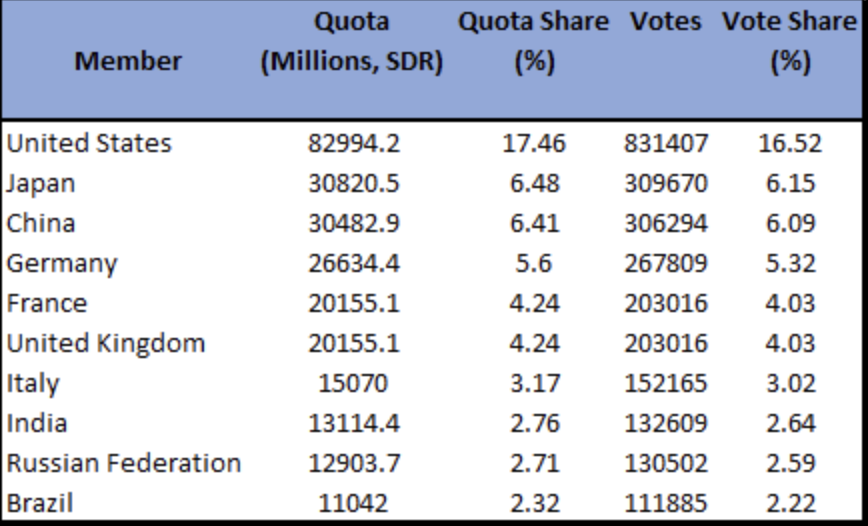International Monetary Fund
2023 AUG 15
Preliminary >
International Relations > International Institutions > World Bank & IMF
Why in news?
- Reserve Bank Governor Shaktikanta Das has called for the timely completion of the 16th general review of quotas at the International Monetary Fund (IMF), highlighting its potential to enable the IMF to better support distressed nations.
About International Monetary Fund:
- The International Monetary Fund (IMF) is an organization of 189 countries. It was conceived in 1944 at the United Nations Bretton Woods conference in New Hampshire, United States.
Primary aims:
- Promote international monetary cooperation
- Facilitate the expansion and balanced growth of international trade
- Promote exchange stability
- Assist in the establishment of a multilateral system of payments
- Make resources available to members experiencing balance-of-payments difficulties.
Activities:
- The IMF’s fundamental mission is to ensure the stability of the international monetary system. It does so in three ways:
- 1. Keeping track of the global economy and the economies of member countries:
- The IMF oversees the international monetary system and monitors the economic and financial policies of its member countries. The IMF highlights possible risks to stability and advises on needed policy adjustments.
- It also provides periodic assessments of global prospects in its World Economic Outlook report, of financial markets in its Global Financial Stability Report, of public finance developments in its Fiscal Monitor, and of external positions of the largest economies in its External Sector Report.
- 2. Lending to countries with balance of payments difficulties:
- The IMF provides loans to member countries experiencing actual or potential balance of payments problems to help them rebuild their international reserves, stabilize their currencies, continue paying for imports, and restore conditions for strong economic growth, while correcting underlying problems.
- 3. Giving practical help to members:
- The IMF works with governments around the world to modernize their economic policies and institutions, and train their people. This helps countries strengthen their economy, improve growth and create jobs.
Resources:
- Quota:
- Most resources for IMF loans are provided by member countries, primarily through their payment of quotas. Quota subscriptions are a central component of the IMF’s financial resources.
- Each member country of the IMF is assigned a quota, based broadly on its relative position in the world economy.
- Voting power in the IMF is based on a quota system

- Borrowing Arrangements:
- Quota subscriptions of member countries are the IMF's main source of financing. However, it also sources funds through Multilateral and bilateral borrowings from member nations in case it finds the quota insufficient.
- Special Drawing Rights (SDR):
- The SDR is an international reserve asset, created by the IMF in 1969 to supplement its member countries’ official reserves. The SDR serves as the unit of account of the IMF.
- A basket of currencies determines the value of the SDR. They are the US dollar, Euro, Japanese yen, Chinese renminbi and British pound sterling.
- SDR is neither a currency nor a claim on the IMF. Rather, it is a potential claim on the freely usable currencies of IMF members. SDRs can be exchanged for these currencies.
- Gold:
- Gold remains an important asset in the reserve holdings of several countries, and the IMF is still one of the world’s largest official holders of gold. The IMF holds around 2,814.1 metric tons of gold at designated depositories.
PRACTICE QUESTION:
With reference to ‘International Monetary Fund’, consider the following statements:
1. IMF provides grants to member countries
2 . China has the highest share of quotas in IMF
Which of the statements given above is/are correct?
(a) 1 only
(b) 2 only
(c) Both 1 and 2
(d) Neither 1 nor 2
Answer
